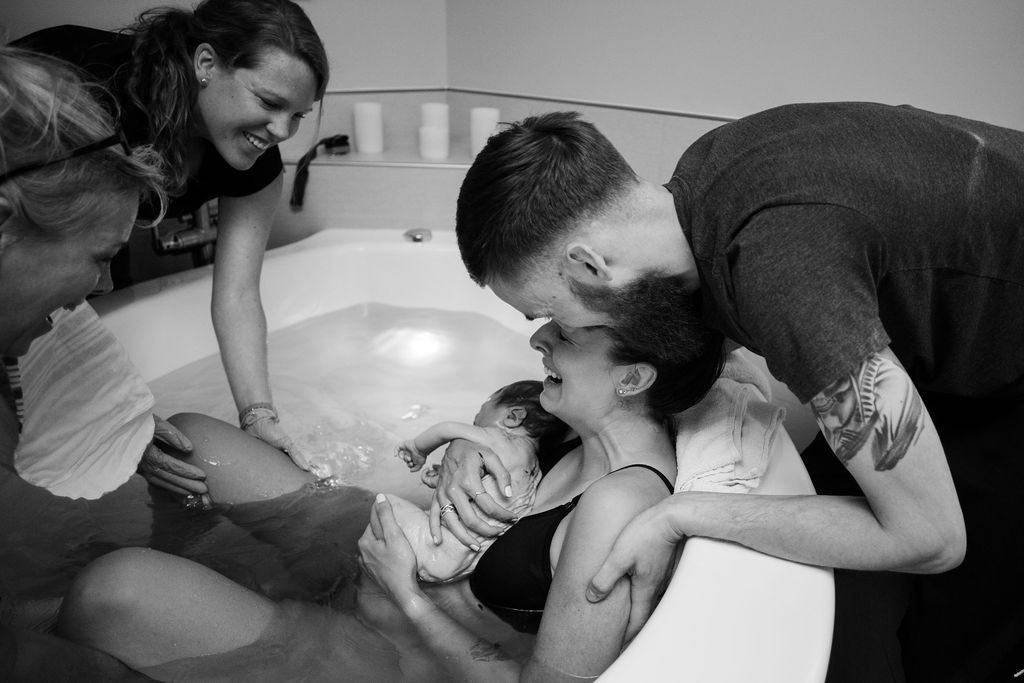Dispelling the Top 7 Myths About Water Birth
With water births becoming an increasingly popular natural birthing option, there are of course many misconceptions out there. From concerns about infection, to worries about the baby drowning or inhaling water, there are plenty of scary myths about water births that aren’t necessarily true. Here are the top 7 myths we hear about water births and why you shouldn’t worry!
Top 7 Myths of Water Birth
You have to be naked to have a water birth: If modesty is a concern for you and you don’t want to feel overly exposed during birth, fear not, there are no rules stating that one must be naked during a water birth. You are free to wear whatever top you feel comfortable in, be it a t-shirt, sports bra or swim suit top. What’s most important is that you are comfortable and are able to more freely throughout your labor and delivery.
Your baby will be more likely to get an infection if born into water: The risk for infection is one of the most commonly cited fears about water birth. The reality is that the rate of infant infection reported in water births is less than .01 percent. Although many women do pass a stool while pushing their baby out some experts believe that the water perhaps might even provide a partial barrier to infection by diluting any bacteria making it less likely to cause harm to the baby.
Your baby will overheat if you have a water birth: The maximum temperature recommended for a water birth is 99-100 degrees Fahrenheit. Your baby is not at risk of overheating at this temperature and will be born into a comfortable and womb-like environment in the water. You can also choose to have the temperature cooler if that is more comfortable for you. The water temperature and your temperature will be checked routinely throughout labor and delivery to ensure that you are not overheating and your midwife will also help ensure that you stay adequately hydrated throughout the process.
Having a water birth will cause more vaginal tearing: On the contrary, water births actually have lower rates of perineal trauma and vaginal tearing than non-water births due to the added elasticity because of the water. Water immersion has also been shown to help relax the pelvic floor which ultimately aids in the descent and pushing out of baby.
You can’t get out of the tub if you decide to have a water birth: Water immersion can be utilized during your birth experience for any part, the entirety, or on and off throughout your birth experience. There’s no rule that says that once you are in the water you need to stay in. Should your body tell you that you need to get out and move around or you’ve decided you’d be more comfortable birthing outside of the tub, you absolutely have that flexibility to make changes as you see fit.
Your baby might drown if born into the water: Another common concern shared about delivering in water is whether or not there is risk of baby drowning. However, when your baby is born they are actually still receiving his oxygen supply from the placenta. Once they emerge, they will be immediately lifted out of the water which will then signal their body to shift over to breathing through their lungs and increase blood flow to that area.
You have to be young to have a water birth: There is no age cut off for when a person is no longer able to have a water birth. Instead, your midwife or doctor will assess your health and the health of your baby and help you make an informed decision based on those factors. Factors that may prevent you from having a water birth include maternal infection, a breech baby, excessive bleeding or other complications that may make a water birth unsafe for you or your baby.
If you are interested in possibly having a water birth, contact Health Foundations to speak with a midwife who will be happy to alleviate your worries, address your concerns, and answer all of your questions . We are happy to offer free consultations and tours of our Birth Center, including viewing our homelike birthing suites with new built-in birthing tubs. We would love to be part of your birthing experience and help you decide if water birth is for you!
Photo credit: www.allielauritson.com and www.eyesofmeephotography.c

